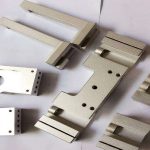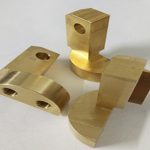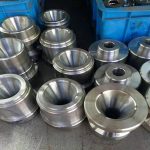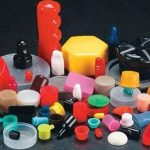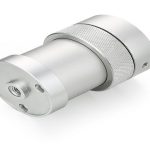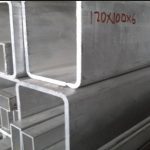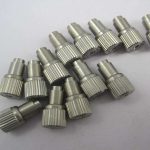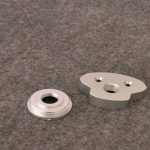Plastic parts are vital in many different industries. New combinations of materials and manufacturing technologies are being developed, especially in challenging applications such as automotive engineering.
Continuous fiber-reinforced thermoplastics are a common example of this innovation, which is extremely strong and lightweight at the same time.
Automotive engineering is one such field, providing a series of possible applications for continuous fiber-reinforced thermoplastics. Parts made of this material have good mechanical properties and can adapt to complex geometries while still being lightweight.
Injection molding technology enables manufacturers to precisely design workpieces of the desired shape using their preferred materials. Metal parts can be incorporated into these components, and at the same time, the technology can shorten cycle time, which is a key consideration when manufacturing high-volume products.
New manufacturing technology requires precise temperature monitoring
Through its FiberForm process, KraussMaffei has successfully developed a new technology that can produce these parts to high standards. In this case, continuous fiber-reinforced thermoplastic semi-finished products (also called organic plates) are used as the base material.
Large-format semi-finished products like this can be made of carbon, glass, aramid or composite fiber layers embedded in a thermoplastic matrix (such as polypropylene or polyamide). The organic sheet is heated before being thermoformed into the desired shape and back-injected.
If the entire process is to be successful, the first stage of this FiberForm process-the heating of the semi-finished product is very important. The temperature of the entire surface of the entire organic sheet should be as uniform as possible.
There are two important considerations for heating thin plates in a special oven equipped with infrared radiators: the organic thin plates must be heated as quickly as possible, and the temperature must be evenly distributed over the entire surface.
New measurement and control technology
KraussMaffei has designed and developed infrared heating technology suitable for this process, which can ensure uniform and rapid heating of organic sheets. In the standard version, depending on the size of the heating system, up to 72 infrared radiators will be integrated.
In KraussMaffei’s infrared heating system, the semi-finished product is heated to the appropriate temperature. The infrared thermometer is located behind the groove (white arrow). Image source: KraussMaffei
Dr. Cetin helped bring these innovative new lightweight products to life.
During the development and implementation process, Optris thermal imaging cameras were also used to check the results. KraussMaffei (left)’s new process protocol ensures an even distribution of surface temperature. Image source: KraussMaffei
Traditional commercially available temperature controllers are rarely suitable for this task.
Herrmann played a central role in the development of these new products. In addition, the standard controller cannot adapt to the heating of the entire system in multiple cycles, or the consequences of such operations.
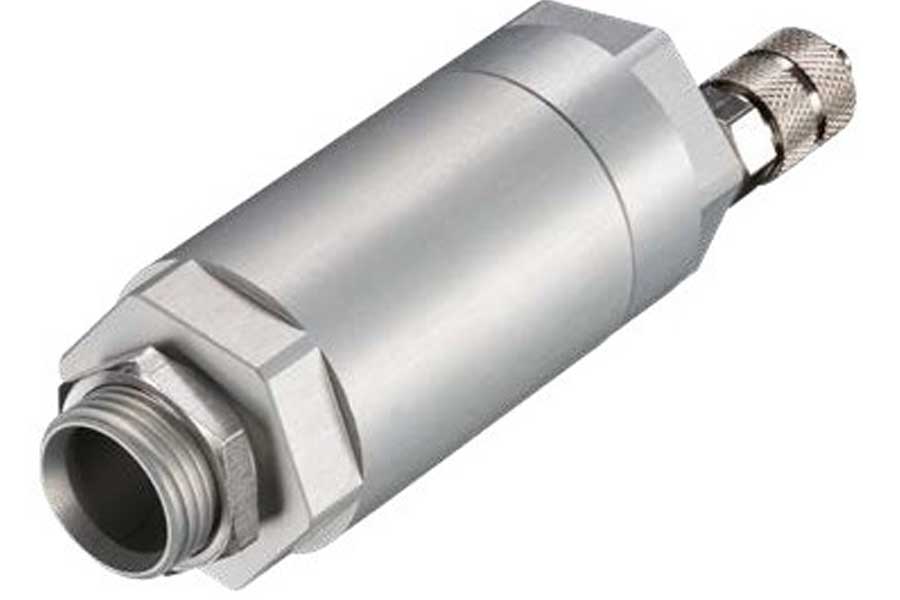
Robust pyrometer provided by professional manufacturer
Facts have proved that Optris’ CT LT22 pyrometer is the ideal choice. Herrmann outlines that there are many benefits to using these pyrometers in their applications. They are indeed very compact and can even withstand the high temperatures prevailing behind infrared radiators.
The pyrometer itself consists of two parts-the compact sensor head is only 14 mm in diameter and can operate at ambient temperatures up to 180°C without cooling. It is the remote electronic system that defines the parameters, which can be installed far away from the sensor itself.
In this example, the electronic system is installed outside the infrared heating system. The sensor head is equipped with an optional purge ring to prevent the optical components from being contaminated by fog or dust.
Intelligent control technology
The software used to control the temperature of the new heating system consists of an external and multiple internal closed-loop systems. Initially, a pyrometer was assigned to each individual heating zone.
The external closed-loop system monitors the entire temperature, taking into account the way in which each area affects each other. Industrial PC provides temperature control hardware, and the pyrometer is connected through a 4 to 20 mA current output. These are included as standard parts in the Optris pyrometer.
Screen shot of the factory user interface. Image source: KraussMaffei
From the perspective of software and hardware, KraussMaffei’s infrared heating technology can be integrated into production facilities.
The system is mechanically connected to the injection molding machine through a standardized Euromap 18 interface, which means that KraussMaffei’s infrared heating technology can also be retrofitted to an injection molding machine that has already been installed and used.
Airbag shell after FiberForm treatment. Image source: KraussMaffei
The hardware and software solutions used to control the temperature of the infrared heating system must also be able to communicate seamlessly with the controller of the injection molding machine. Therefore, the heating technology has been fully integrated into the KraussMaffei MC6 injection molding machine controller.
Automated production plant for the production of continuous fiber reinforced thermoplastics. Image source: KraussMaffei
Reliable mass production
The infrared heating technology heats the organic flakes quickly and uniformly. In mass production, this is an important consideration, and it also involves the reliability of the oven.
These considerations are related to the control technology and the machinery itself. Reliable components are essential, because in the worst case, a single malfunctioning pyrometer can cause production to stop completely.
Link to this article: High-quality plastic parts can be manufactured using pyrometers
Reprint Statement: If there are no special instructions, all articles on this site are original. Please indicate the source for reprinting:https://www.cncmachiningptj.com/,thanks!
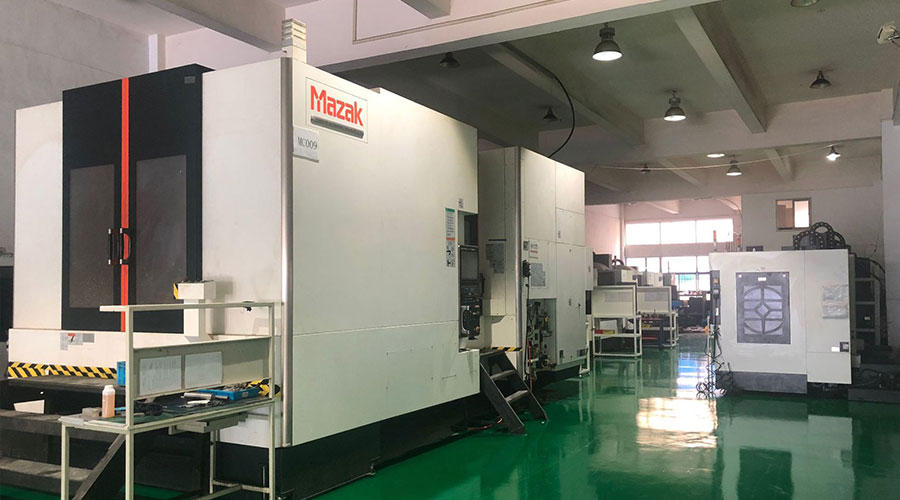 Sheet metal, beryllium, carbon steel, magnesium, 3D printing, precision CNC machining services for heavy equipment, construction, agriculture and hydraulic industries. Suitable for plastics and rare alloys machining. It can turn parts up to 15.7 inches in diameter. Processes include swiss machining,broaching, turning, milling, boring and threading. It also provides metal polishing, painting, surface grinding and shaft straightening services. The production range is up to 50,000 pieces. Suitable for screw, coupling, bearing, pump, gearbox housing, drum dryer and rotary feed valve applications.PTJ will strategize with you to provide the most cost-effective services to help you reach your target,Welcome to Contact us ( [email protected] ) directly for your new project.
Sheet metal, beryllium, carbon steel, magnesium, 3D printing, precision CNC machining services for heavy equipment, construction, agriculture and hydraulic industries. Suitable for plastics and rare alloys machining. It can turn parts up to 15.7 inches in diameter. Processes include swiss machining,broaching, turning, milling, boring and threading. It also provides metal polishing, painting, surface grinding and shaft straightening services. The production range is up to 50,000 pieces. Suitable for screw, coupling, bearing, pump, gearbox housing, drum dryer and rotary feed valve applications.PTJ will strategize with you to provide the most cost-effective services to help you reach your target,Welcome to Contact us ( [email protected] ) directly for your new project.
Link to this article:High-quality plastic parts can be manufactured using pyrometers
Reprint Statement: If there are no special instructions, all articles on this site are original. Please indicate the source for reprinting:Tungusten,Thanks!^^

